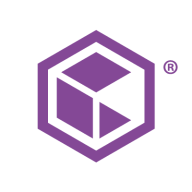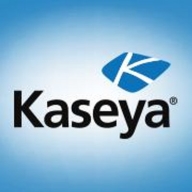

Commvault Cloud and Unitrends are two competitive solutions in the data protection landscape. Users are happier with the pricing and support of Commvault Cloud, but Unitrends is preferred for its superior features.
Features: Commvault Cloud users value its comprehensive data management capabilities, automated backup solutions, and integration with various cloud platforms. Unitrends is praised for its extensive backup options, intuitive disaster recovery tools, and easy scalability.
Room for Improvement: Users of Commvault Cloud cite a need for a simpler initial setup process and improved performance for large-scale operations. Unitrends feedback points to better documentation and more flexible licensing options.
Ease of Deployment and Customer Service: Commvault Cloud is noted for a relatively complex deployment model but benefits from strong customer service support. Unitrends offers a simpler deployment process with efficient installation guides, though its customer service is perceived as less responsive.
Pricing and ROI: Commvault Cloud users find the setup cost justified by its robust capabilities, achieving favorable ROI in large environments. Unitrends provides competitive initial pricing with quick ROI, notably in SMB segments.
At the pre-sale cycle, we have spocks aligned from Commvault with whom we get in touch, and they provide all the required support that we need.
The number of people who know Commvault Cloud is lesser compared to Veeam.
Customer support has very closed departments, requiring us to shuffle between them to get one thing done because representatives have limited accessibility.
They remained dedicated during more complex problems, such as connecting to their external backup appliance.
I have not faced any downtimes with Commvault Cloud.
Commvault Cloud is highly stable, and I would rate it a ten out of ten.
I would like to see AI capabilities in Commvault Cloud.
I feel that the support is not yet up to the mark, with not enough professional engineers to provide assistance.
I would evaluate the impact of Unitrends' ransomware detection for strengthening our data security measures as somewhat misleading.
Commvault Cloud is expensive, and there is room for the price to be 10-15 percent lower than what they are charging currently.
The public cloud acts as a bigger solution for the on-premise while the on-premise acts as a DR for the public cloud workloads.
Other features include endpoint solutions, integration with Office 365, ransomware protection, archival for long-term retention, and no ingress or egress charges.
We can back up unlimited TBs due to our per node license.
The impact of Unitrends' instant recovery features on strengthening data security measures is significant.
| Product | Market Share (%) |
|---|---|
| Commvault Cloud | 4.9% |
| Unitrends | 0.5% |
| Other | 94.6% |


| Company Size | Count |
|---|---|
| Small Business | 57 |
| Midsize Enterprise | 24 |
| Large Enterprise | 82 |
| Company Size | Count |
|---|---|
| Small Business | 12 |
| Midsize Enterprise | 16 |
| Large Enterprise | 8 |
Commvault Cloud is the ultimate cyber resilience platform built to meet the demands of the hybrid
enterprise. Beyond its core functionality of data backup and recovery across diverse workloads, including applications, databases, virtual machines, and files, Commvault Cloud stands out as a robust defense against ransomware. Going beyond backup, the platform integrates advanced data security features such as encryption, access control, and threat detection, safeguarding against unauthorized access and cyber threats.
With tools for data management, classification, and migration, businesses can optimize storage costs, enhance accessibility, and comply with regulations seamlessly. Boasting cloud integration with major providers like AWS, Azure, and Google Cloud, Commvault Cloud leverages the scalability and flexibility of the cloud for comprehensive data protection and management. The platform's automation capabilities streamline tasks, and its reporting and analytics features provide valuable insights into data usage, potential risks, and optimization strategies. Commvault Cloud is not just a security tool; it is a key component of cyber resilience, enabling organizations to not only protect against cyberattacks but also recover swiftly and minimize the impact of incidents. Elevate your cyber resilience strategy with Commvault Cloud.
Unitrends offers cloud replication, remote management, and instant recovery, making it highly versatile for backup needs across physical and virtual nodes. Its seamless functionality and robust support ensure enhanced operational efficiency.
Unitrends is known for its ability to integrate with physical and virtual environments, ideal for backing up Azure VMs, local systems, and diverse operating systems. Users employ Unitrends for daily backups, disaster recovery, and file recovery tasks, protecting servers, VMware, Hyper-V clusters, and legacy systems. Real-time synchronization and monitoring are key to its efficiency, although some areas like interface and support structure require refinement. Pricing and stability concerns, as well as SQL backup sensitivity, suggest room for improvement. Users often encounter issues with billing, renewals, and dual VPN support, seeking more scalable and affordable options.
What are the key features of Unitrends?In industries like healthcare, financial services, and education, Unitrends plays a critical role in maintaining data integrity and accessibility. It is implemented to simplify backup processes, minimize downtime, and ensure compliance with data protection regulations, offering a comprehensive security strategy.
We monitor all Backup and Recovery reviews to prevent fraudulent reviews and keep review quality high. We do not post reviews by company employees or direct competitors. We validate each review for authenticity via cross-reference with LinkedIn, and personal follow-up with the reviewer when necessary.